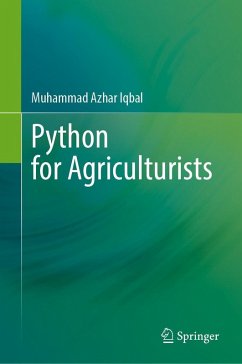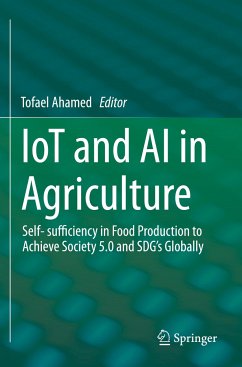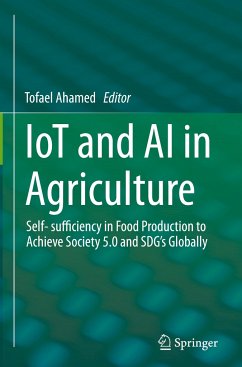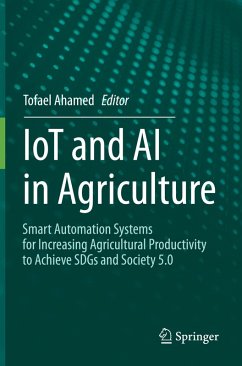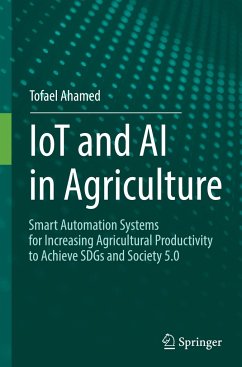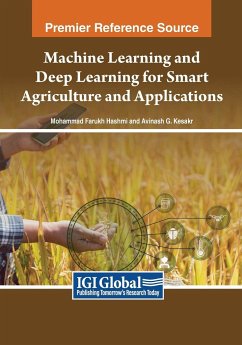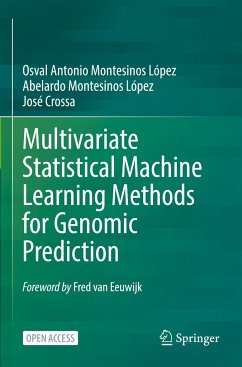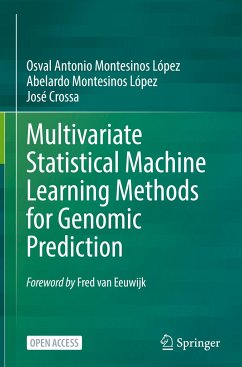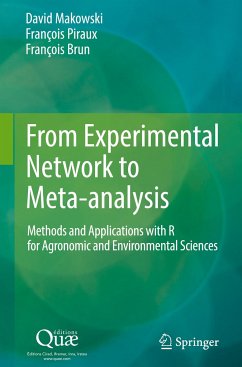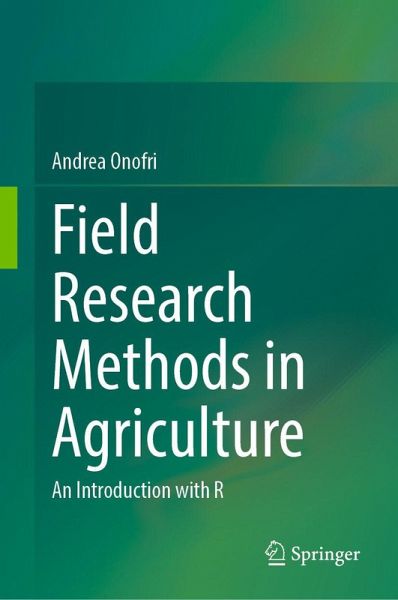
Field Research Methods in Agriculture
An Introduction with R

PAYBACK Punkte
38 °P sammeln!
Field research is a key element of scientific progress in agriculture and applied biology, bridging laboratory experiments in controlled conditions with on-farm trials conducted for demonstrative purposes. Like laboratory research, field studies must follow rigorous scientific protocols to yield reliable answers, while taking place in real-life settings to ensure practical relevance. The use of near-commercial-scale equipment and the need to address random variability, such as fertility gradients and pest invasions, have led to specific methodologies for experimental design and data analysis. ...
Field research is a key element of scientific progress in agriculture and applied biology, bridging laboratory experiments in controlled conditions with on-farm trials conducted for demonstrative purposes. Like laboratory research, field studies must follow rigorous scientific protocols to yield reliable answers, while taking place in real-life settings to ensure practical relevance. The use of near-commercial-scale equipment and the need to address random variability, such as fertility gradients and pest invasions, have led to specific methodologies for experimental design and data analysis. These are seldom presented together in a concise, introductory format accessible to students and practitioners, and supported by real-world examples and reproducible code.
This book addresses that gap by focusing on small-plot field experiments evaluating genotypes, agronomic practices, pesticides, and plant protection methods. Using a 'learn-by-doing' approach, it presents selected examples and case studies, along with hands-on exercises. R is used as the primary tool for data analysis, with reproducible code snippets included. While not exhaustive, the book is tailored for a 6 ECTS introductory biometry course (approx. 54 hours), aimed at master s and PhD students in agriculture and biology, and practitioners seeking foundational knowledge. No prior statistics background is required, though basic familiarity with R is assumed; an introductory appendix is provided for beginners.
Topics include: (i) experimental design and layout types; (ii) descriptive statistics; (iii) model fitting (ANOVA, regression, mixed models); (iv) stochastic models (Gaussian density, Monte Carlo simulation); (v) inference and hypothesis testing; (vi) model evaluation; and (vii) parameter combinations.
The book is accompanied by the R package statforbiology and a dedicated website, both free to use. The website is regularly updated with new case studies and revisions to reflect ongoing developments in R.
This book addresses that gap by focusing on small-plot field experiments evaluating genotypes, agronomic practices, pesticides, and plant protection methods. Using a 'learn-by-doing' approach, it presents selected examples and case studies, along with hands-on exercises. R is used as the primary tool for data analysis, with reproducible code snippets included. While not exhaustive, the book is tailored for a 6 ECTS introductory biometry course (approx. 54 hours), aimed at master s and PhD students in agriculture and biology, and practitioners seeking foundational knowledge. No prior statistics background is required, though basic familiarity with R is assumed; an introductory appendix is provided for beginners.
Topics include: (i) experimental design and layout types; (ii) descriptive statistics; (iii) model fitting (ANOVA, regression, mixed models); (iv) stochastic models (Gaussian density, Monte Carlo simulation); (v) inference and hypothesis testing; (vi) model evaluation; and (vii) parameter combinations.
The book is accompanied by the R package statforbiology and a dedicated website, both free to use. The website is regularly updated with new case studies and revisions to reflect ongoing developments in R.



